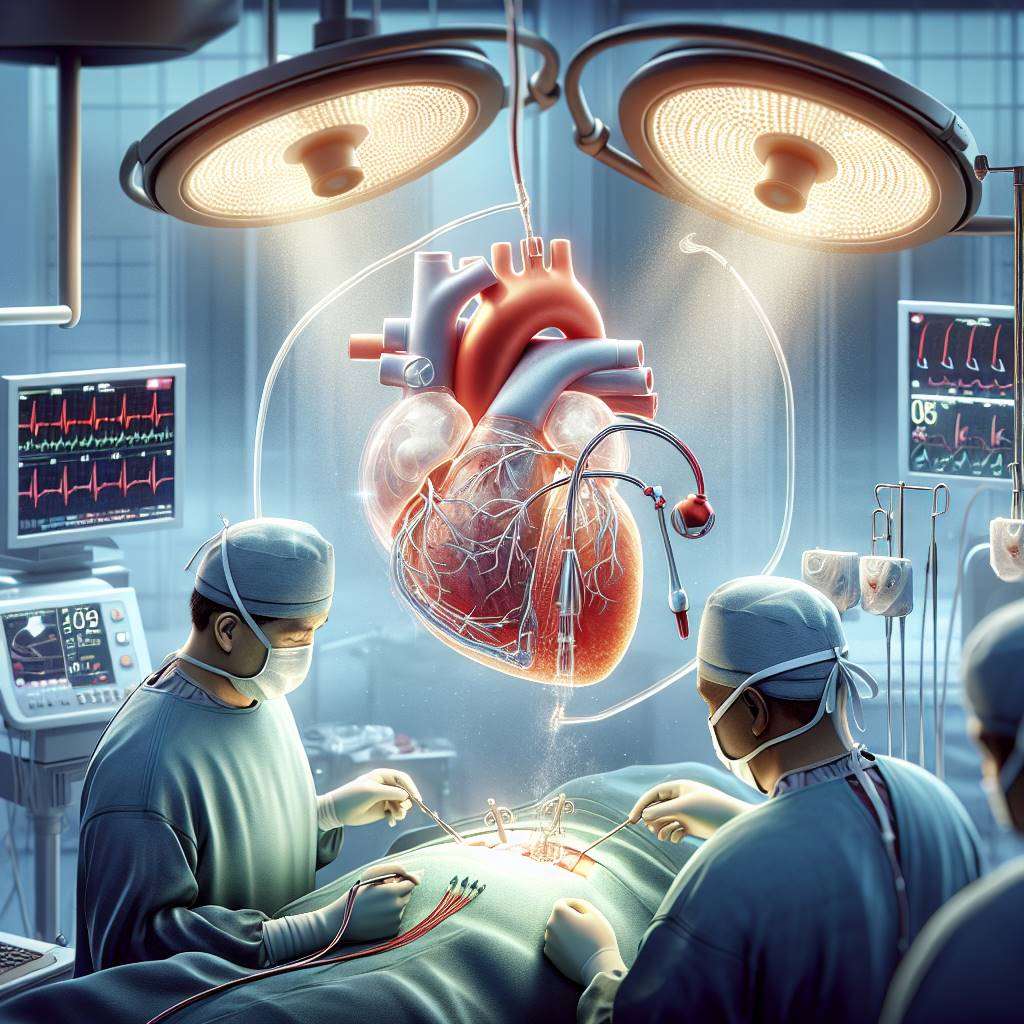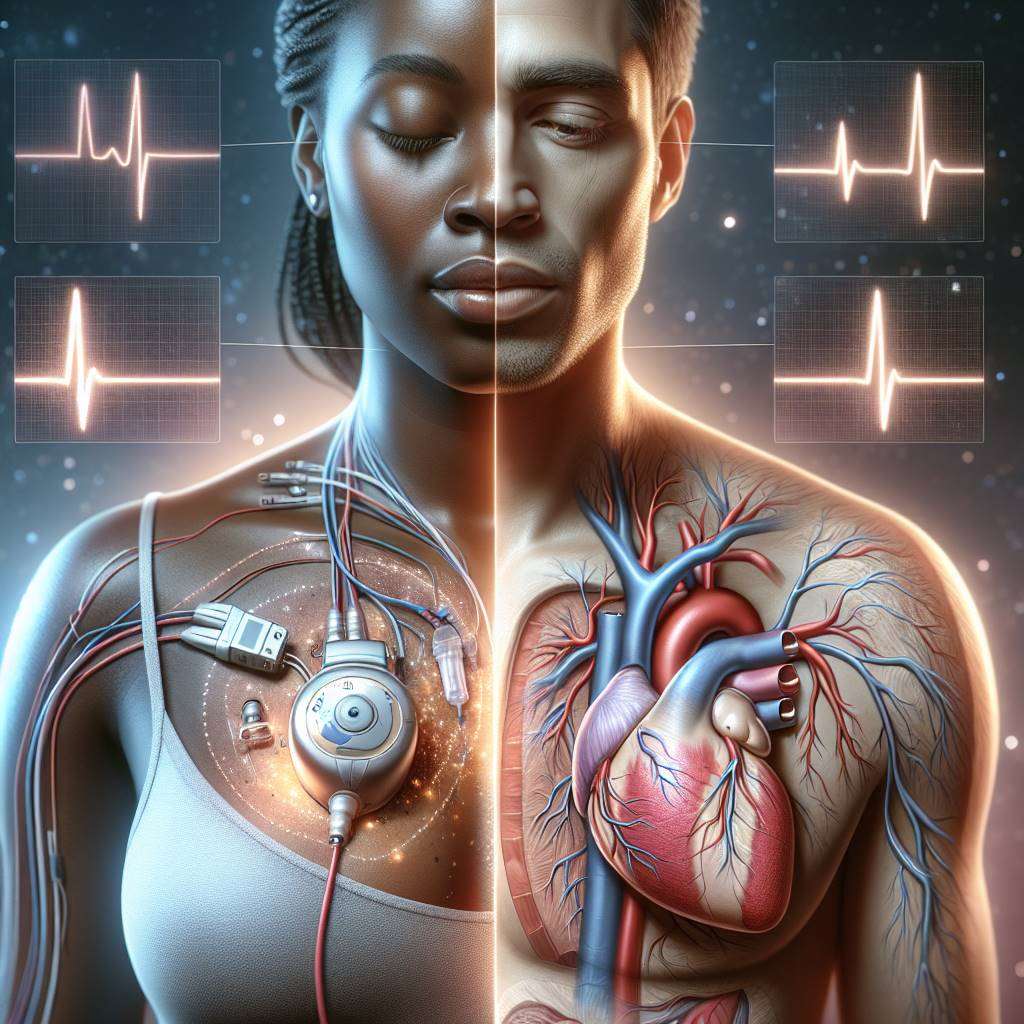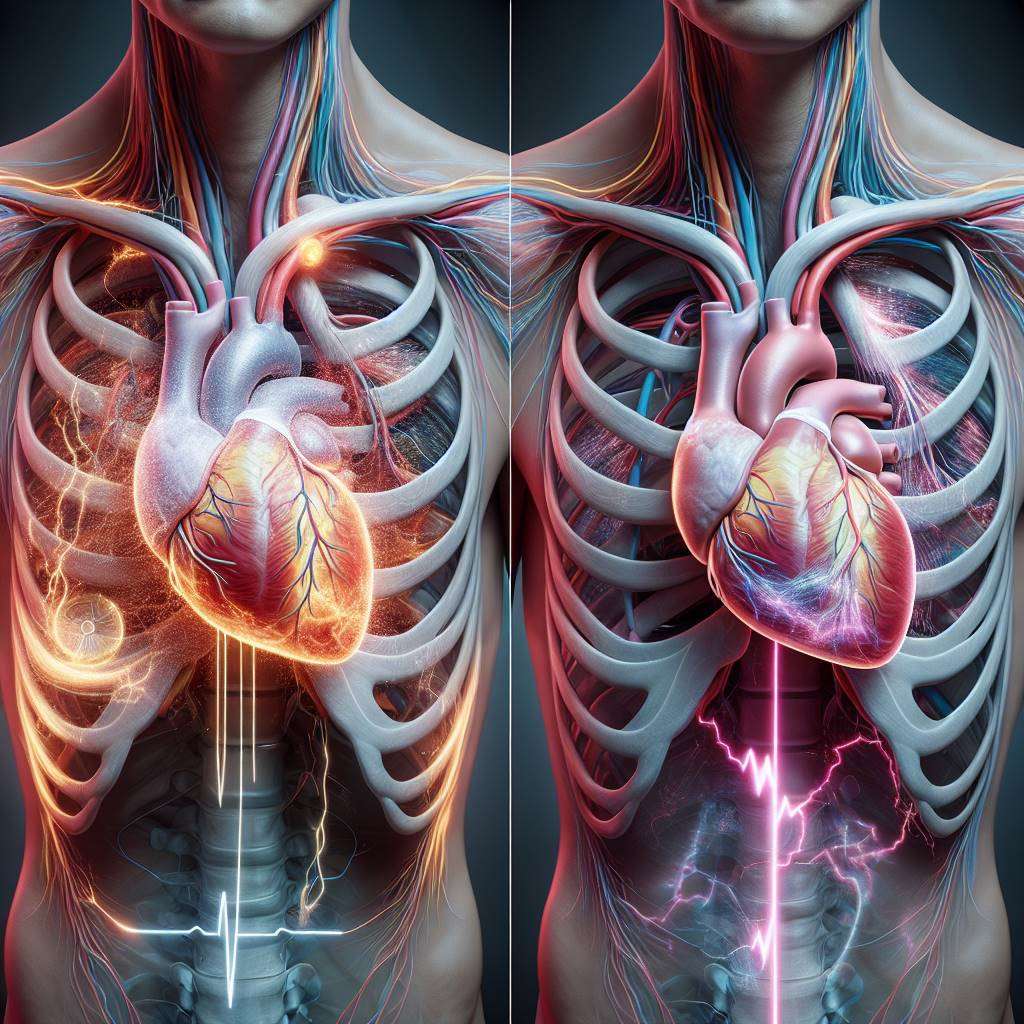An AICD (Automatic Implantable Cardioverter Defibrillator) is a life-saving device designed to monitor and correct abnormal heart rhythms. It can deliver shocks to restore a normal rhythm during life-threatening arrhythmias. Antitachycardia pacing (ATP), on the other hand, is a gentler approach that uses electrical impulses to stabilize the heart without shocks. Both methods are crucial for managing cardiac conditions like ventricular tachycardia.
Understanding the differences between AICD shocks and antitachycardia pacing is essential for patients and caregivers. While both aim to prevent sudden cardiac arrest, their mechanisms and patient experiences differ. This knowledge helps individuals make informed decisions about treatment options and improves awareness of cardiac care advancements.
Understanding AICD Shocks: How They Work
An AICD shock is a high-energy electrical pulse delivered by an implantable device to correct life-threatening arrhythmias like ventricular fibrillation or ventricular tachycardia. The device continuously monitors the heart's rhythm and activates when it detects a dangerous irregularity. This shock is designed to reset the heart's electrical system and restore a normal rhythm.
While highly effective, AICD shocks can be uncomfortable for patients. They are often described as a sudden jolt or thump in the chest. Despite this, the benefits of preventing sudden cardiac arrest far outweigh the discomfort. AICDs are commonly recommended for individuals with a history of severe arrhythmias, heart failure, or those at high risk of sudden cardiac death.
The device's ability to deliver immediate intervention makes it a cornerstone of modern cardiac care. However, understanding its function and potential side effects is crucial for patients and their families.

What Is Antitachycardia Pacing and When Is It Used?
Antitachycardia pacing (ATP) is a technique used by implantable devices like AICDs to treat fast heart rhythms without delivering a shock. It involves sending a series of low-energy electrical impulses to the heart to interrupt and correct the abnormal rhythm. This method is particularly effective for managing ventricular tachycardia, a condition where the heart beats too quickly.
ATP is often preferred because it is painless and less disruptive compared to shocks. It is typically used as the first line of treatment when the device detects a manageable arrhythmia. If ATP fails to restore a normal rhythm, the AICD may then deliver a shock as a backup mechanism.
This approach not only improves patient comfort but also reduces the psychological stress associated with frequent shocks. By minimizing the need for high-energy interventions, ATP enhances the overall quality of life for individuals with implantable cardiac devices.
AICD Shocks vs. Pacing: Key Differences Explained
While both AICD shocks and antitachycardia pacing (ATP) aim to manage dangerous heart rhythms, they differ significantly in their approach and patient experience. AICD shocks deliver high-energy pulses to reset the heart, often causing discomfort. In contrast, ATP uses low-energy electrical impulses, making it a gentler and painless option.
The table below highlights the key differences between the two methods:
| Aspect |
AICD Shocks |
Antitachycardia Pacing (ATP) |
| Energy Level |
High |
Low |
| Patient Experience |
Uncomfortable |
Painless |
| Primary Use |
Severe arrhythmias |
Manageable arrhythmias |
| Effectiveness |
Highly effective |
Effective for specific cases |
Understanding these differences helps patients and healthcare providers choose the most appropriate treatment strategy based on the severity and type of arrhythmia.
When Does an AICD Deliver a Shock?
An AICD delivers a shock when it detects a life-threatening arrhythmia, such as ventricular fibrillation or sustained ventricular tachycardia. These conditions can lead to sudden cardiac arrest if not treated immediately. The device continuously monitors the heart's electrical activity and intervenes when necessary.
The decision to deliver a shock is based on pre-programmed thresholds set by the healthcare provider. For example, if the heart rate exceeds a certain limit or if the rhythm becomes chaotic, the AICD activates. This ensures timely intervention, often within seconds of detecting the abnormality.
Patients with conditions like heart failure, previous cardiac arrests, or a high risk of arrhythmias are prime candidates for AICD implantation. While the shocks can be startling, they are a critical tool in preventing sudden cardiac death and ensuring long-term survival.
How Antitachycardia Pacing Prevents Dangerous Heart Rhythms
Antitachycardia pacing (ATP) is a proactive method to prevent dangerous heart rhythms from escalating. By delivering a series of low-energy electrical impulses, ATP interrupts the abnormal electrical signals causing the arrhythmia. This allows the heart to reset and return to a normal rhythm without the need for a high-energy shock.
ATP is particularly effective for treating ventricular tachycardia, a condition where the heart beats too quickly. It is often used as the first line of defense in implantable devices like AICDs. If ATP fails, the device can escalate to delivering a shock as a backup measure.
The benefits of ATP include improved patient comfort, reduced psychological stress, and fewer disruptions to daily life. By minimizing the need for shocks, ATP enhances the overall effectiveness of cardiac care and improves the quality of life for patients with arrhythmia management devices.
Comparing Effectiveness: AICD Shocks or Pacing?
When it comes to managing life-threatening arrhythmias, both AICD shocks and antitachycardia pacing (ATP) play crucial roles. An AICD (Automatic Implantable Cardioverter Defibrillator) delivers high-energy shocks to restore normal heart rhythm during severe arrhythmias like ventricular fibrillation. This is often life-saving in emergencies.
On the other hand, ATP is a less invasive approach that uses low-energy electrical impulses to interrupt abnormal rhythms, especially in cases of ventricular tachycardia. ATP is typically less painful for patients compared to AICD shocks.
While both methods are effective, the choice depends on the type and severity of the arrhythmia. AICD shocks are more suitable for life-threatening conditions, while ATP is preferred for managing less severe but recurrent arrhythmias.

Side Effects of AICD Shocks and Pacing
Both AICD shocks and antitachycardia pacing come with potential side effects. AICD shocks, while life-saving, can be painful and distressing for patients. Repeated shocks may lead to anxiety, depression, or even post-traumatic stress disorder (PTSD). Additionally, inappropriate shocks can occur due to device malfunction or misinterpretation of heart rhythms.
In contrast, ATP is generally less painful since it uses low-energy impulses. However, it may not always be effective in terminating certain arrhythmias, leading to the need for AICD shocks as a backup. Rarely, ATP can trigger more severe arrhythmias, requiring immediate intervention.
Patients should discuss the risks and benefits of both treatments with their cardiologist to ensure the best approach for their specific condition.
Who Needs AICD Shocks vs. Antitachycardia Pacing?
The decision to use AICD shocks or antitachycardia pacing depends on the patient's medical history and the type of arrhythmia. AICD shocks are recommended for individuals at high risk of sudden cardiac arrest due to conditions like ventricular fibrillation or severe heart failure. These patients often have a history of life-threatening arrhythmias.
ATP, on the other hand, is suitable for patients with recurrent but less severe arrhythmias, such as ventricular tachycardia. It is often used as the first line of treatment to prevent the need for painful shocks.
In some cases, both therapies are combined in a single device to provide comprehensive arrhythmia management. This ensures that patients receive the most appropriate treatment based on their condition.
Can Antitachycardia Pacing Replace AICD Shocks?
While antitachycardia pacing (ATP) is effective for managing certain arrhythmias, it cannot completely replace AICD shocks. ATP is designed to treat less severe arrhythmias like ventricular tachycardia, but it may not work for more dangerous conditions such as ventricular fibrillation.
AICD shocks remain the gold standard for life-threatening arrhythmias, as they deliver high-energy shocks to restore normal heart rhythm instantly. However, ATP is often used as a first-line therapy to reduce the frequency of shocks and improve patient comfort.
In modern devices, both ATP and AICD shocks are integrated, allowing for a tailored approach to arrhythmia management. This combination ensures that patients receive the most effective treatment for their specific needs.
Managing Arrhythmias: AICD Shocks vs. Pacing Options
Managing arrhythmias requires a personalized approach, as no single treatment fits all patients. AICD shocks are highly effective for life-threatening arrhythmias like ventricular fibrillation, while antitachycardia pacing (ATP) is better suited for less severe conditions like ventricular tachycardia.
Here’s a comparison of the two options:
| Feature |
AICD Shocks |
Antitachycardia Pacing |
| Energy Level |
High-energy shocks |
Low-energy impulses |
| Pain Level |
Can be painful |
Generally painless |
| Effectiveness |
Best for severe arrhythmias |
Effective for less severe arrhythmias |
Patients should work closely with their cardiologist to determine the best treatment plan, considering their specific condition and lifestyle.
Patient Experience: AICD Shocks vs. Pacing Sensations
Patients with an Automatic Implantable Cardioverter Defibrillator (AICD) often describe the sensation of a shock as sudden and intense, akin to being kicked in the chest. These shocks are designed to correct life-threatening arrhythmias and restore a normal heart rhythm.
In contrast, Antitachycardia Pacing (ATP) is a gentler intervention. Patients may not even notice the pacing, as it involves delivering rapid, low-energy electrical pulses to interrupt abnormal heart rhythms. This makes ATP a more comfortable option for managing certain types of tachycardias.
Understanding these sensations helps patients prepare for their treatment journey. While AICD shocks can be startling, they are life-saving. ATP, on the other hand, offers a less invasive alternative for specific cases.

Cost Comparison: AICD Shocks and Antitachycardia Pacing
The cost of managing heart rhythm disorders varies significantly between AICD shocks and Antitachycardia Pacing (ATP). AICD devices are more expensive due to their advanced technology and ability to deliver high-energy shocks. The implantation procedure and follow-up care also add to the overall expense.
ATP, being a feature of many AICD devices, does not incur additional costs beyond the device itself. However, the cost-effectiveness of ATP lies in its ability to reduce the frequency of shocks, which can lower hospital visits and improve quality of life.
Here’s a quick comparison:
| Aspect |
AICD Shocks |
ATP |
| Cost |
High |
Included in AICD |
| Comfort |
Uncomfortable |
Comfortable |
| Effectiveness |
Life-saving |
Prevents shocks |
How Doctors Decide Between Shocks and Pacing
Doctors carefully evaluate a patient’s condition to determine whether AICD shocks or Antitachycardia Pacing (ATP) is the best approach. Factors such as the type and severity of the arrhythmia, the patient’s medical history, and overall health are considered.
For life-threatening ventricular arrhythmias, AICD shocks are often the first line of defense. These shocks are crucial in preventing sudden cardiac arrest. On the other hand, ATP is preferred for managing less severe tachycardias, as it can terminate abnormal rhythms without the discomfort of a shock.
Doctors also consider the frequency of arrhythmias. Patients with frequent episodes may benefit from ATP to minimize shocks, while those with infrequent but severe arrhythmias may rely on AICD shocks.
Long-Term Outcomes: AICD Shocks vs. Pacing Therapy
Both AICD shocks and Antitachycardia Pacing (ATP) play vital roles in improving long-term outcomes for patients with heart rhythm disorders. AICD shocks are highly effective in preventing sudden cardiac death, making them indispensable for high-risk patients.
ATP, on the other hand, contributes to better quality of life by reducing the frequency of shocks. Studies show that patients who experience fewer shocks report lower levels of anxiety and improved mental well-being. This highlights the importance of ATP in comprehensive arrhythmia management.
Over time, advancements in device technology have enhanced the precision and effectiveness of both therapies, ensuring that patients receive the best possible care tailored to their needs.
FAQs About AICD Shocks and Antitachycardia Pacing
Q: Are AICD shocks painful?
A: Yes, AICD shocks can be painful and are often described as a sudden, intense jolt. However, they are life-saving in emergencies.
Q: Is Antitachycardia Pacing (ATP) always effective?
A: ATP is effective for many types of tachycardias, but it may not work for all arrhythmias. In such cases, an AICD shock may be required.
Q: Can ATP replace AICD shocks?
A: No, ATP is a complementary therapy. While it can reduce the need for shocks, AICD shocks remain essential for severe arrhythmias.
Best Aicd Implantation Doctors in India
Dr. Balbir Singh, Chairman of Cardiology at Max Super Speciality Hospital, Saket, New Delhi, is a renowned expert with over 30 years of experience in electrophysiology and cardiac pacing. Another leading specialist is Dr. Praveen Chandra, Chairman of Interventional Cardiology at Medanta - The Medicity, Gurugram, with 25+ years of experience and international recognition for his expertise in advanced cardiac care.
Learn more on best aicd implantation doctors in india
Best Aicd Implantation Hospitals in India
Fortis Escorts Heart Institute, New Delhi, a NABH-accredited hospital, is a leader in cardiac electrophysiology and advanced pacing technologies. Apollo Hospitals, Chennai, a JCI-accredited facility, offers cutting-edge treatments like robotic cardiac surgery and comprehensive international patient services. Both hospitals are renowned for their multidisciplinary teams and high success rates in managing complex cardiac conditions.
Find more best aicd implantation hospitals in india
Aicd Implantation Cost in India
The cost of AICD implantation in India typically ranges from INR 5,00,000 to INR 8,00,000 (approximately USD 6,000 to USD 10,000), while antitachycardia pacing procedures are generally less expensive. Factors such as the hospital’s category, doctor’s expertise, and device type influence costs. Patients benefit from significant savings compared to Western countries, along with options for insurance coverage and third-party financing.
Learn aicd implantation cost in india
Aicd Implantation Treatment in India
AICD implantation involves placing a small device under the skin to monitor and correct abnormal heart rhythms, while antitachycardia pacing uses electrical impulses to stabilize the heart. Indian hospitals employ advanced technologies like 3D mapping and robotic-assisted techniques, ensuring precision and safety. Recovery typically takes a few weeks, with hospitals adhering to global medical protocols and offering personalized care.
Learn on Aicd Implantation Treatment in India
FAQs
What is the difference between AICD shocks and antitachycardia pacing?
AICD shocks deliver a high-energy electrical impulse to stop life-threatening arrhythmias, while antitachycardia pacing uses low-energy pulses to restore normal heart rhythm in less severe cases.
Are AICD shocks painful?
Yes, AICD shocks can be painful as they deliver a high-energy impulse. However, they are life-saving in cases of severe arrhythmias.
Is antitachycardia pacing effective for all arrhythmias?
No, antitachycardia pacing is effective for certain types of tachyarrhythmias but may not work for more severe or complex arrhythmias.
How long does an AICD device last?
The battery life of an AICD device typically ranges from 5 to 10 years, depending on usage and device type.
What are the risks of AICD implantation?
Risks include infection, bleeding, and device malfunction. However, these are rare when performed by experienced specialists.
Can I travel with an AICD device?
Yes, patients with an AICD device can travel, but they should carry their device identification card and avoid strong electromagnetic fields.
Is antitachycardia pacing reversible?
Yes, antitachycardia pacing is a temporary intervention and does not involve permanent changes to the heart.
How soon can I resume normal activities after AICD implantation?
Most patients can resume normal activities within 4 to 6 weeks, but they should avoid strenuous activities during the initial recovery period.
Are these treatments covered by insurance in India?
Yes, most health insurance plans in India cover AICD implantation and antitachycardia pacing. Patients should confirm with their provider.
What follow-up care is required after these treatments?
Regular follow-ups are essential to monitor the device function and overall heart health. This may include periodic device checks and adjustments.
Understanding Life with an AICD: Key Considerations for Patients
Living with an Automated Implantable Cardioverter Defibrillator (AICD) can significantly impact daily life, including driving and traveling. Patients often face specific restrictions that are essential for their safety and well-being. For a comprehensive overview of these limitations, check out our blog on Life with an AICD: Driving, Traveling, and Daily Restrictions.
Another critical aspect of AICD implantation is the placement of leads, which plays a vital role in the device's effectiveness. Proper lead placement ensures optimal heart monitoring and shock delivery when necessary. To learn more about why lead placement matters, visit our detailed article on Lead Placement in AICD Implantation: Why It Matters.
Understanding these factors can empower patients to navigate their new lifestyle with confidence and awareness, ensuring they make informed decisions about their health and activities.